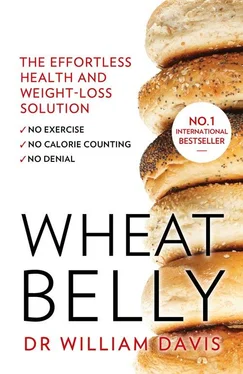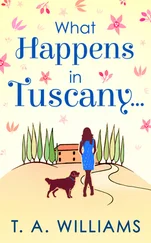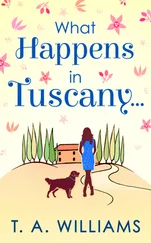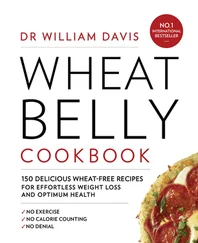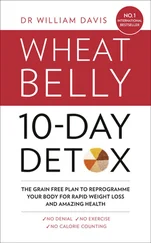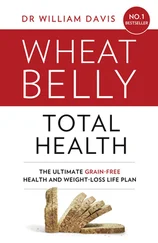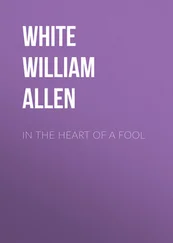The good news: there is a cure for this condition called wheat belly – or, if you prefer, pretzel brain, bagel bowel or biscuit face.
The bottom line: elimination of this food, part of human culture for more centuries than Larry King was on the air, will make you sleeker, smarter, faster and happier. Weight loss, in particular, can proceed at a pace you didn’t think possible. And you can selectively lose the most visible, insulin-opposing, diabetes-creating, inflammation-producing, embarrassment-causing fat: belly fat. It is a process accomplished with virtually no hunger or deprivation, with a wide spectrum of health benefits.
So why eliminate wheat rather than, say, sugar, or all grains in general? The next chapter will explain why wheat is unique among modern grains in its ability to convert quickly to blood sugar. In addition, it has a poorly understood and understudied genetic makeup and addictive properties that actually cause us to overeat even more; has been linked to literally dozens of debilitating ailments beyond those associated with overweight; and has infiltrated almost every aspect of our diet. Sure, cutting out refined sugar is probably a good idea, as it provides little or no nutritional benefit and will also impact your blood sugar in a negative way. But for the most bang for your buck, eliminating wheat is the easiest and most effective step you can take to safeguard your health and trim your waistline.
CHAPTER 2 Chapter 2 Not Your Gran’s Muffins: The Creation of Modern Wheat Chapter 3 Wheat Deconstructed PART TWO WHEAT AND ITS HEAD-TO-TOE DESTRUCTION OF HEALTH Chapter 4 Hey, Man, Wanna Buy Some Exorphins? The Addictive Properties of Wheat Chapter 5 Your Wheat Belly Is Showing: The Wheat/Obesity Connection Chapter 6 Hello, Intestine. It’s Me, Wheat. Wheat and Coeliac Disease Chapter 7 Diabetes Nation: Wheat and Insulin Resistance Chapter 8 Dropping Acid: Wheat as the Great pH Disrupter Chapter 9 Cataracts, Wrinkles and Dowager’s Humps: Wheat and the Ageing Process Chapter 10 My Particles Are Bigger Than Yours: Wheat and Heart Disease Chapter 11 It’s All in Your Head: Wheat and the Brain Chapter 12 Bagel Face: Wheat’s Destructive Effect on the Skin PART THREE SAY GOODBYE TO WHEAT Chapter 13 Goodbye, Wheat: Create a Healthy, Delicious, Wheat-Free Life Epilogue Appendix A Looking for Wheat in All the Wrong Places Appendix B Healthy Wheat Belly-Shrinking Recipes List of Searchable Terms Acknowledgements References About the Publisher
NOT YOUR GRAN’S MUFFINS: THE CREATION OF MODERN WHEAT Chapter 2 Not Your Gran’s Muffins: The Creation of Modern Wheat Chapter 3 Wheat Deconstructed PART TWO WHEAT AND ITS HEAD-TO-TOE DESTRUCTION OF HEALTH Chapter 4 Hey, Man, Wanna Buy Some Exorphins? The Addictive Properties of Wheat Chapter 5 Your Wheat Belly Is Showing: The Wheat/Obesity Connection Chapter 6 Hello, Intestine. It’s Me, Wheat. Wheat and Coeliac Disease Chapter 7 Diabetes Nation: Wheat and Insulin Resistance Chapter 8 Dropping Acid: Wheat as the Great pH Disrupter Chapter 9 Cataracts, Wrinkles and Dowager’s Humps: Wheat and the Ageing Process Chapter 10 My Particles Are Bigger Than Yours: Wheat and Heart Disease Chapter 11 It’s All in Your Head: Wheat and the Brain Chapter 12 Bagel Face: Wheat’s Destructive Effect on the Skin PART THREE SAY GOODBYE TO WHEAT Chapter 13 Goodbye, Wheat: Create a Healthy, Delicious, Wheat-Free Life Epilogue Appendix A Looking for Wheat in All the Wrong Places Appendix B Healthy Wheat Belly-Shrinking Recipes List of Searchable Terms Acknowledgements References About the Publisher
He is as good as good bread.
Miguel de Cervantes,
Don Quixote
WHEAT, MORE THAN any other foodstuff (including sugar, fat and salt), is woven into the fabric of the Western food experience, a trend that began even before 1950s US TV show Ozzie met Harriet. It has become such a ubiquitous part of our diet in so many ways that it seems essential to our lifestyle. What would a fry-up be without toast, lunch without sarnies, bacon butty without bread, picnics without hot-dog buns, dip without crackers, hummus without pitta, coffee without a croissant, apple pie without the pastry?
IF IT’S TUESDAY, IT MUST BE WHEAT
I once measured the length of the bread aisle at my local supermarket: sixty-eight feet.
That’s sixty-eight feet of white bread, whole-wheat bread, multi-grain bread, seven-grain bread, rye bread, pumpernickel bread, sourdough bread, Italian bread, French bread, bread sticks, white bagels, raisin bagels, cheese bagels, garlic bagels, oat bread, flax bread, pitta bread, dinner rolls, Kaiser rolls, poppy seed rolls, hamburger buns, and fourteen varieties of hot dog buns. That’s not even counting the bakery and the additional forty feet of shelves packed with a variety of ‘artisanal’ wheat products.
And then there’s the snack aisle with forty-something brands of crackers and twenty-seven brands of pretzels. The baking aisle has bread crumbs and croutons. The dairy case has dozens of those tubes you crack open to bake rolls, Danish pastries and croissants.
Breakfast cereals fill a world unto themselves, usually enjoying a monopoly over an entire supermarket aisle, top to bottom shelf.
There’s much of an aisle devoted to boxes and bags of pasta and noodles: spaghetti, lasagna, penne, elbows, shells, whole-wheat pasta, green spinach pasta, orange tomato pasta, egg noodles, tiny-grained couscous to seven-inch-wide lasagne sheets.
How about frozen foods? The freezer has hundreds of noodle, pasta and wheat-containing side dishes to accompany the meat loaf and roast beef au jus.
In fact, apart from the detergent and soap aisle, there’s barely a shelf that doesn’t contain wheat products. Can you blame Americans if they’ve allowed wheat to dominate their diets? After all, it’s in practically everything.
Wheat as a crop has succeeded on an unprecedented scale, exceeded only by corn in acreage of farmland planted. It is, by a long stretch, among the most consumed grains on earth, constituting 20 per cent of all calories consumed.
And wheat has been an undeniable financial success. How many other ways can a manufacturer transform five pence worth of raw material into £2.50 worth of glitzy, consumer-friendly product, topped off with endorsements from the American Heart Association? In most cases, the cost of marketing these products exceeds the cost of the ingredients themselves.
Foods made partly or entirely of wheat for breakfast, lunch, dinner and snacks have become the rule. Indeed, such a regimen would make the USDA, the Whole Grains Council, the Whole wheat Council, the American Dietetic Association, the American Diabetes Association and the American Heart Association happy, knowing that their message to eat more ‘healthy whole grains’ has gained a wide and eager following.
So why has this seemingly benign plant that sustained generations of humans suddenly turned on us? For one thing, it is not the same grain our forebears ground into their daily bread. Wheat naturally evolved to only a modest degree over the centuries, but it has changed dramatically in the past fifty years under the influence of agricultural scientists. Wheat strains have been hybridised, crossbred and introgressed to make the wheat plant resistant to environmental conditions, such as drought, or pathogens, such as fungi. But most of all, genetic changes have been induced to increase yield per acre. The average yield on a modern North American farm is more than tenfold greater than farms of a century ago. Such enormous strides in yield have required drastic changes in genetic code, including reducing the proud ‘amber waves of grain’ of yesteryear to the rigid, eighteen-inch-tall high-production ‘dwarf’ wheat of today. Such fundamental genetic changes, as you will see, have come at a price.
Читать дальше
